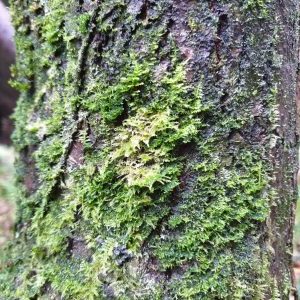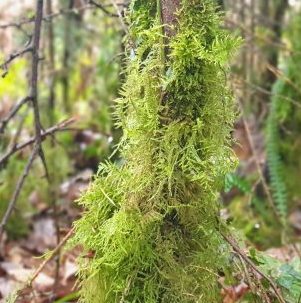
Yes, sphagnum moss is edible, although it’s advisable not to eat it as there’s a good chance you could become ill due to toxicity or cross-contamination.
Other types of edible mosses include Reindeer moss, Iceland moss, Oak moss and Spanish moss - all of which I’ll touch upon later on in the article.
Why you’d even want to eat moss is a good question, but it might become a tempting source of nutrition if you’re caught in the wilderness carrying no food. And since this blog is dedicated to all things moss, the question ‘is sphagnum moss edible’ is one worth exploring.
The problem with eating Sphagnum moss
Our bodies simply aren’t programmed to survive on sphagnum moss. If they were, then it would be a staple food source. Sphagnum moss has little to zero nutritional value, has no fruit, and consists mainly of micro leaves.
What’s more, you’d have to eat a boat load of sphagnum moss (which I don’t recommend) to fuel you with the calories you need to fuel you with energy. Raw moss also takes its toll on the human digestive system. We aren’t herbivores, so our bodies aren’t genetically designed to break down leaf matter as efficiently.
Other uses of Sphagnum moss
Although I’d strongly advise against eating it, sphagnum moss does have other uses, especially in a survival capacity.


1. Sphagnum moss is a drinking water source
Thanks to its spongy nature, sphagnum moss has an innate ability to retain water. So if you ever run a risk of severe dehydration while out in the wild, squeezing it to get the water could provide you with much needed hydration. What’s more, bacteria won’t grow on moss since it’s acidic, so the water should be safe to consume without boiling. This should only ever be attempted in a life or death situation, as a last resort for hydration.
2. Sphagnum moss can help with dressing a wound
Most moss species are effective at dressing wounds, including sphagnum moss.
Make sure you clean the wound and then apply the moss as a bandage. It will work to clean the wound as sphagnum moss contains iodine, which helps keep wounds sterile.
3. Sphagnum moss is great for kindling
If you’re out in the wilderness and need a light or warmth, then sphagnum moss is extremely flammable so can be used as kindling. Obviously if it’s wet it won’t be, so you need to find some dry sphagnum moss, or even keep it in a reserve so it does dry out.
4. Sphagnum moss is waterproof
Sphagnum moss makes for a great cover for a shelter because it can retain water effectively, so it essentially acts as a waterproof cover.
5. Sphagnum moss is an insulator
As well as its ability to retain water to waterproof a shelter, sphagnum moss also retains humidity really effectively. Thanks to its tight root system, it can act as a good insulator on a shelter.
Although I’d strongly advise against eating it, sphagnum moss does have other uses
Other edible mosses
1. Iceland Moss
As the name suggests, Iceland moss is native to Iceland but can also be found in the northern hemisphere. It has a leaflike structure that makes it look different in appearance to other mosses.
2. Oak Moss
Oak moss should not be eaten raw as it has the potential to be toxic and thus pose a severe health risk. Oak moss needs to be boiled thoroughly - often several times - and cleaned out before making any attempts to consume it.
It grows primarily on oak trees, hence the name, and has a somewhat stringy appearance.
3. Reindeer Moss
Named due to its appearance resembling reindeer antlers, reindeer moss tends to be found in arctic climates and woodland areas in the northern hemisphere.
4. Spanish Moss
This moss is mostly found in humid environments - namely subtropical and tropical regions.
Disclaimer about eating moss at your own risk
As I’ve reiterated throughout this article - you should avoid eating moss and only eat it at your own risk.
The two good reasons you should avoid eating it are:
- Moss is very acidic, which can cause quite serious stomach problems, especially since human digestive systems aren’t programmed to process the substance.
- Moss grows on all sorts of surfaces, including trees, rocks and the ground. So by eating it raw you run the risk of coming into contact with wildlife, insets, soil or harmful bacteria that has also come into contact with the moss.

